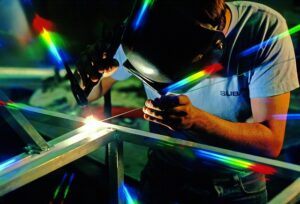Investment casting is a great way to create affordable, high-quality parts for sensitive applications. When determining the need for custom investment casting or before requesting a quote, it is paramount to take into account the details a manufacturer needs to know and factors that affect costs and turnaround times. By being aware of these details in advance, you’ll be better equipped to set your project up for success.
Considerations When Ordering Custom Investment Castings
Preliminary Design
Take advantage of the full casting process and minimize costs by including details such as:
- Minimum section thickness: The desired rigidity and strength for a casting determines its minimum thickness. An investment casting should be at least 0.76 millimeters thick.
Draft: Drafts are the tapers on a pattern’s vertical faces. They help remove a pattern from a mold without damaging its walls. - Cores: Cores are the hollow spaces within a casting. They may be a separate piece placed inside a mold to create a cavity if the mold alone cannot make the hollow space. Cores may be used in place of a draft, depending on the application.
- Parting line: Parting facilitates the production of molds and patterns. Patterns with straight parting lines in one plane are simpler and less expensive to produce than those with irregular lines because they simplify molding and coring.
Patterns
Manufacturers use wax patterns to make molds, or investments. A casting is only as good as its pattern, especially in regard to smooth finishes and close tolerances. Good communication regarding pattern equipment design and production will help prevent misunderstandings and give you a clearer picture of the costs involved.
Quantity
It’s best to specify the quantity of parts you require because it determines the type of tooling required. It also affects a foundry’s ability to meet your production volume needs. Some foundry’s offer short-term, short-run projects; others might only focus on high-volume production.
Specifications

Foundries produce castings in two metal categories: non-ferrous (non-iron based) and ferrous (iron based). Metal alloys should be cast using internationally recognized standards and tested with heat, product and chemical analyses.
Foundries may use heat treatments to homogenize, standardize and enhance an alloy’s properties. For many types of alloys, the treatment is routine and used to give the metal the minimum physical properties in final cast products. Depending on the alloy and application, you may specify specialized heat treatments as an additional process.
Soundness
A metal component’s soundness relates to the level of discontinuities or impurities in it, such as shrinkage or sand inclusions. These engineering requirements are important to include because castings are never defect-free. Before production, define acceptance and rejection criteria with the foundry.
Testing and Inspection
After production, an investment casting manufacturer should test the castings to ensure they meet specifications and for surface finish conditions, physical properties, cracks, internal soundness and dimensional accuracy. Clearly communicate and agree on the testing and inspection requirements with a manufacturer before production. After completing tests, manufactures may ship the castings or subject them to further processing.
Weight
The more an investment casting weighs, the more the materials will cost. Providing detailed weight-related data when requesting a quote will result in a more accurate estimate. Manufactures are interested in a casting’s gross and net weights.
Machining

Schedules: Production and Delivery
The turnaround time you require for your short- and long-term needs will help you narrow down the foundries that can accommodate your request. When requesting a quote, keep in mind that the following will affect turnaround times after ordering a casting:
- Commercial considerations
- Pattern construction and changes
- Tooling construction
- Sampling
- Inspections
- Full production setup
- Production
- Post-production processes
- Logistics and shipping
Sinotech has more than 20 years of experience making QS-9000 and ISO-certified investment castings. We’ll assist you through every part of the investment casting process, from design to product delivery. Our specialists will help you achieve the most economical solutions for your needs and personally oversee your project’s progress in person. Contact us today to learn more about using Sinotech for all your investment casting needs.
